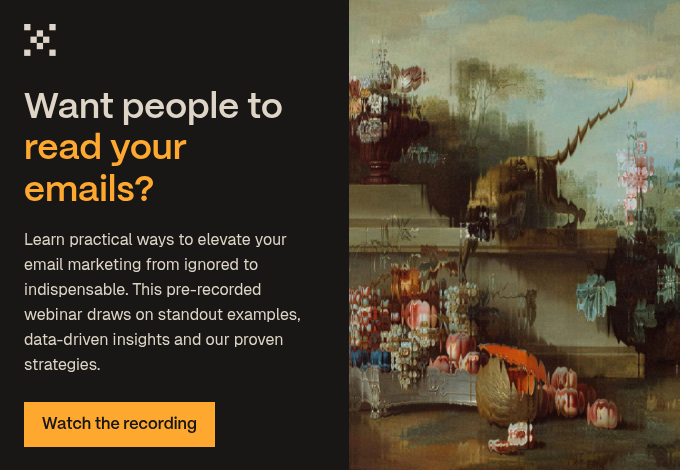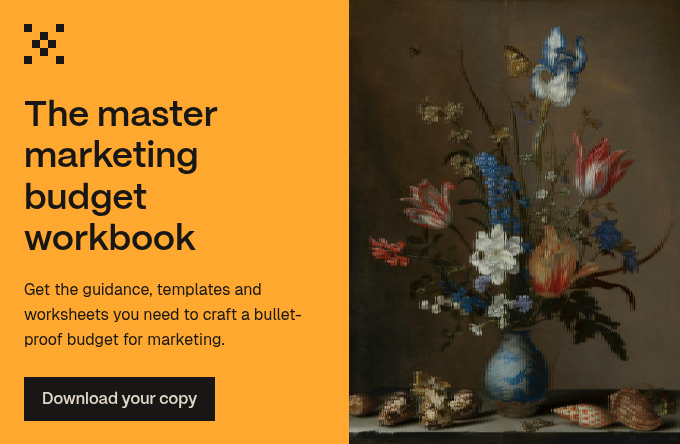2022 was an award bonanza for our company. Small Employer of the Year (Investors in People), Best for the World Honouree for Governance (B Corp), three HubSpot Impact Awards... And just last week our Chief Happiness Officer won the Positive Leadership Awards.
Our award wins are no accident. We’ve put a lot of effort into showcasing our work in a way that appeals to judges and puts us in the best light. Now, we’re sharing our thoughts so you can do the same.
Use the advice in this article to inform your own award submission process.
This blog is based on one of our popular webinars, hosted by Marketing Manager, Maddy Leslie. Click here to watch the video and download the slides.
Getting started
So, you want to apply for an award. Fantastic!
Of course, before you get quacking, you need to get your ducks in a row. End-to-end (tail to bill?), this process typically takes about four to six weeks. Make sure you’ve given yourself plenty of time to do your award submission justice.
The first step is to identify the awarding body, timeline, cost and category. Often, awarding bodies are aggregate content and news groups in the industry, such as The Drum for Marketing and Advertising. You may need to register with these awarding bodies to be able to submit your application. Awarding bodies tend to run annual awards, assessing work from a date range usually within the last year, with a specific deadline for submission. Each award tends to include several categories.
Top tip: Costs for submitting an award can vary. Try to keep costs low by submitting for early bird deadlines or submitting for multiple categories at once.
Once you know what category you’re applying for, read the guidelines. Often, there will be a PDF explainer to give you an idea of how to structure your submission. Awarding bodies request different things as part of the brief and may have a specific template of questions for you to follow. This is where you’ll find that crucial information. Pay careful attention to these requirements.
Then, pinpoint the work you are submitting. That may be internal work or a campaign or project you ran with a client. Figure out who needs to be involved and if you need to ask permission from anyone to go ahead. Check if the awarding body is asking for any sensitive information, such as financials, and make sure you have permission to disclose that as well.
In short, check the fine print at this planning stage because every awarding body is different. That being said, here are some common requirements:
- A snappy title e.g. ‘A Dream with a Deadline’.
- Usually around 1000 words, with strict limits on word count.
- May be split into questions or be more freeform.
- May require a visualisation e.g. printable art board.
- May require ‘proof’ or just additional visuals e.g. screenshots, documentation and so on.
Do your research
Now you have your framework, it’s time to gather your resources. In other words, research.
As writers, we approach this process in much the same way we do when researching any piece of writing. In fact, award submissions have a lot in common with case studies, so our advice is to look at the kind of data and input you’d want for a really great case study. And every great case study is a gripping story (more on this later).
Channel your inner journalist. If you weren’t directly involved with the activity or project, then talk to your colleagues. Spend time investigating the ins and outs of the work that went on.
Break your research down into these steps:
- Interview those involved in the work for highlights and where to look for more information.
- Look at the initial proposals, meetings and plans.
- Identify the deliverables and pull out key pieces of information.
- Access your reporting platform to gather key pieces of data and results.
- Skim through notes from any post-project reviews.
- Request quotes from stakeholders.
After you’ve done all that, you’re (finally!) ready to start writing.
5 steps for writing a winning award submission
If you aren’t presented with a set of questions to answer and the submission is more free-form, use this five-point structure to give clear signposts to the reader (an awards judge, remember). They have boxes to tick. Make it easy. Where you can, use headers, bullet points and other structural formats to make the piece more readable.
1. Summarise the main points of the story
In a couple of sentences, tell us what the project was, what the results were and why the reader should care.
Avoid trying to say everything here. Moreso, focus on one key highlight that will act as the hook to draw the reader in. You’re whetting the appetite; grounding the story and setting the tone with that single enticing detail. After this, you can showcase the breadth of the project.
This is your ‘It is a truth universally acknowledged...’ Like the first line of a novel, its job is to create interest.
For example:
‘Articulate Marketing made FredTech a million quid in 30 days. Here’s how we did it, and why they won’t stop sending us gift baskets in the mail.’
2. Establish who was involved, and what the project was
In that example, you’re left with some questions, right? Who are Articulate Marketing and FredTech? What did they do to get such a great result?
Here’s where you start to answer those questions. This satisfies the reader’s initial curiosity and, ideally, leads to them wanting to know more. You want your audience to settle into the story, to listen, to become invested.
Use this section to establish the people involved, and the parameters of the activity. This sets the scene. Use your four “W”s: where, when, who, what.
Let’s go back to our example:
‘FredTech is a cloud services provider. The marketing team needed to promote their new service: IT-in-a-box. Articulate has been marketing for tech companies, including big names like Dell and Microsoft, for decades. Our experts helped FredTech differentiate their offer and get it in front of an engaged audience of prospective leads. To do so, we created an extensive campaign that ran over a quarter, covering multiple promotion channels including social media, email and their website.’
3. Outline the starting position, challenges, needs, goals and objectives
This is the “why”. Why does this matter? What was the problem that needed to be solved and why did it have such an impact?
You’ve caught the eye of the reader. You’ve established your setting and your characters. Now, you’ve got to set the stakes. And every good plot needs high stakes to be interesting.
Think about the challenges from different angles - what the data shows, the personal position of key stakeholders, or how a certain issue is blocking progress in some significant way. Consider your goals, so the reader can see what your intentions were with the project, and, later, can compare the results to your original objectives.
So, let’s look at how to do this in our example:
‘FredTech’s team needed a big launch to sell their new service. They wanted to garner interest before an event in May. But they weren’t seeing any results from the activities they’d tried so far, with only X amount of traffic to the landing page and no customers since the start of the year. The CEO was considering pulling the plug on the whole service. But they wanted to make their offer the key thing that makes prospects choose FredTech. They believed it was good enough to outstrip competitors’ offerings.’
4. Go into the strategy, ways of working and implementation
Now, you start to get into how you resolved the issue. How did the process work? What were your strategies and methods? What made them unique and creative?
This is the meat of your award submission. It’s the bit where you took control of the situation and turned it around. By this point, you want your audience to be rooting for your success and to care about the outcomes. Allow, in your writing, the enthusiasm for the project to come through. Include technical detail, but remember, awards judges may need more context than your usual audience, especially if you operate in a niche industry.
We return to our example:
‘We started with a branding exercise to align messaging and visual materials for the IT-in-a box service. Through this, we came to an exciting new brand message for the offer: “IT: leave it to the squares”. Then, we made a brand character, “Squarey” and created on-theme short videos for social media with this fun character front and centre. We reworded the landing page and added pop-ups and calls to action to key site pages…’ Etc.
5. Finally, talk about results, feedback and the future
Round up your story with data and quotes that demonstrate the success of your work. Don’t skimp on the hard facts here. The judges will be paying particular attention to this section.
A solid indication of a project’s success is if there’s more to come. More work with a happy client, referrals, unlocked potential for new activities, the sense of going from strength to strength - all that good stuff. You want your reader to believe the story lives on.
‘FredTech saw a 2000% increase in people coming to their landing page. They’ve signed ten new clients so far, which represents a million pounds of revenue and a sweet company yacht. Their event went off without a hitch. The people they spoke to were already buzzing about the IT in-a-box service and how much good stuff they’d heard about it on socials. The Marketing Manager at FredTech told Articulate, “I’ve never been happier.” Due to this success, we’re already starting on our next project together: building thought leadership around laptop security.’
Final steps
Once you’ve written your award submission, get someone else to read it. Any piece of writing benefits from a “chef at the pass”.
You and your editor should check the piece for any glaring errors, like spelling mistakes. Check it against the awarding guidebook. Is it within the word count? Have you missed or misinterpreted anything about the work? Watch out for hype, too. It can be easy to get carried away with this kind of format.
Above all else, check you have written with the right audience in mind: awards judges. Get in their shoes - what are the weak points in this submission? Where would you take away marks? Did you nail the brief? Have you met ALL the criteria? What score would you give it compared to last year’s winner?
Then, gather your materials, including any artwork or supporting material, and submit it to the awarding body.
Make a note for when the nomination shortlist is due to be published.
Cross your fingers. And wait…
What to do when you win
You’ve won! Well, hardly surprising since you followed these award-winning steps.
Now’s the time to celebrate. Congratulate your team and promote the win across your communication channels, tagging the awarding body and any third parties that were involved. Send out a press release and write a blog (like we did here). Add logos and links to your website pages. Tell current and future clients. This is your time in the spotlight. Enjoy it.
Until that happy future comes to pass, good luck!
 Posted by
Maddy Leslie
Posted by
Maddy Leslie
.jpg?width=1600&height=800&name=europeana-_lrgkfBzjXM-unsplash%20(1).jpg)





